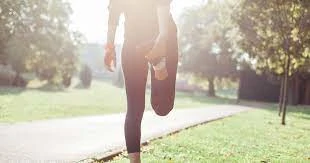Early morning joint exercises are the best way to get the day off to a good start. These exercises help to lubricate and circulate the joints. It has been proven that exercising in the morning can alleviate arthritis and joint pain. There are, of course, other advantages to including early morning joint exercises in your routine. Some of them are as follows:
- Strengthen the muscles around your joints.
- Boost your energy levels throughout the day
- Help you maintain bone strength
- Help you control your weight
- Improve your sleep quality
- Enhance your quality of life
- Improve your balance
If you have joint pain or you are just a beginner, you should be extra cautious when conducting joint exercises. Today, I would like to share some tips for early morning joint exercises with which you can protect your joints. So, let’s get right into it.
Tips To Protect Your Joints While Exercising
If you haven’t been active in a while, start slowly to ease your joints into exercise. Pushing yourself too hard can result in overworked muscles and worsen joint pain.
As you begin, keep the following tips in mind:
Purchase Good Shoes
Your entire body is interconnected. That implies that if you exert too much pressure on your feet or ankles, it can affect the joints in your legs and hips as well. Make sure you’re wearing shoes that cushion your joints and absorb the impact of whatever actions you’re doing while exercising.
Keep the Impact Low
Low-impact workouts such as stationary or recumbent bicycles, water training, or elliptical trainers help to keep joint stress low.
Apply Heat
Before you begin, use heat to relax your joints, muscles and reduce any pain you may be experiencing. Warm towels, hot packs, or a shower should be applied for around 20 minutes and should be warm but not unbearably hot.
Move Gently
Warm up your joints by moving them gently at the beginning. Start with five to ten minutes of range-of-motion exercises before moving on to strengthening or aerobic workouts.
Go slowly
Make sure your movements are slow and easy. Take a break if you’re in pain. Experiencing sharp pain or unusually strong joint pain may indicate a problem. If your joints are swollen or red, you should slow down.
Ice Afterwards
After exercising, apply ice to your joints for up to 20 minutes as needed, especially if the workout creates joint swelling.
Trust your senses and don’t put more strain on your joints than you think they can tolerate. Take it easy at first, gradually increasing the time and intensity of your workouts as you progress.
Don’t Overdo
If you haven’t exercised in a while, you may have some pain afterwards. In general, if you’re hurting for more than two hours after exercising, you’ve probably overexerted yourself. Consult your doctor to determine what type of pain is normal and what type of pain indicates the presence of anything more serious.
Rheumatoid arthritis sufferers should ask their doctors whether they should exercise during flares. One option for dealing with joint flares is to conduct just range-of-motion exercises to keep your body moving, or to exercise in water to cushion your joints.
Stretch when you finish.
It’s tempting to cut your workout short and avoid stretching, but if you’re dealing with joint pain, doing so will just make things worse. Why? Because tight muscles can aggravate joint pain, limit movement, and make future workouts more difficult.
After a workout, it’s a good idea to gently stretch each muscle group, spending at least 20-30 seconds on each stretch. This will help you avoid injury the next time you start exercising.
Click here to contact for more information


